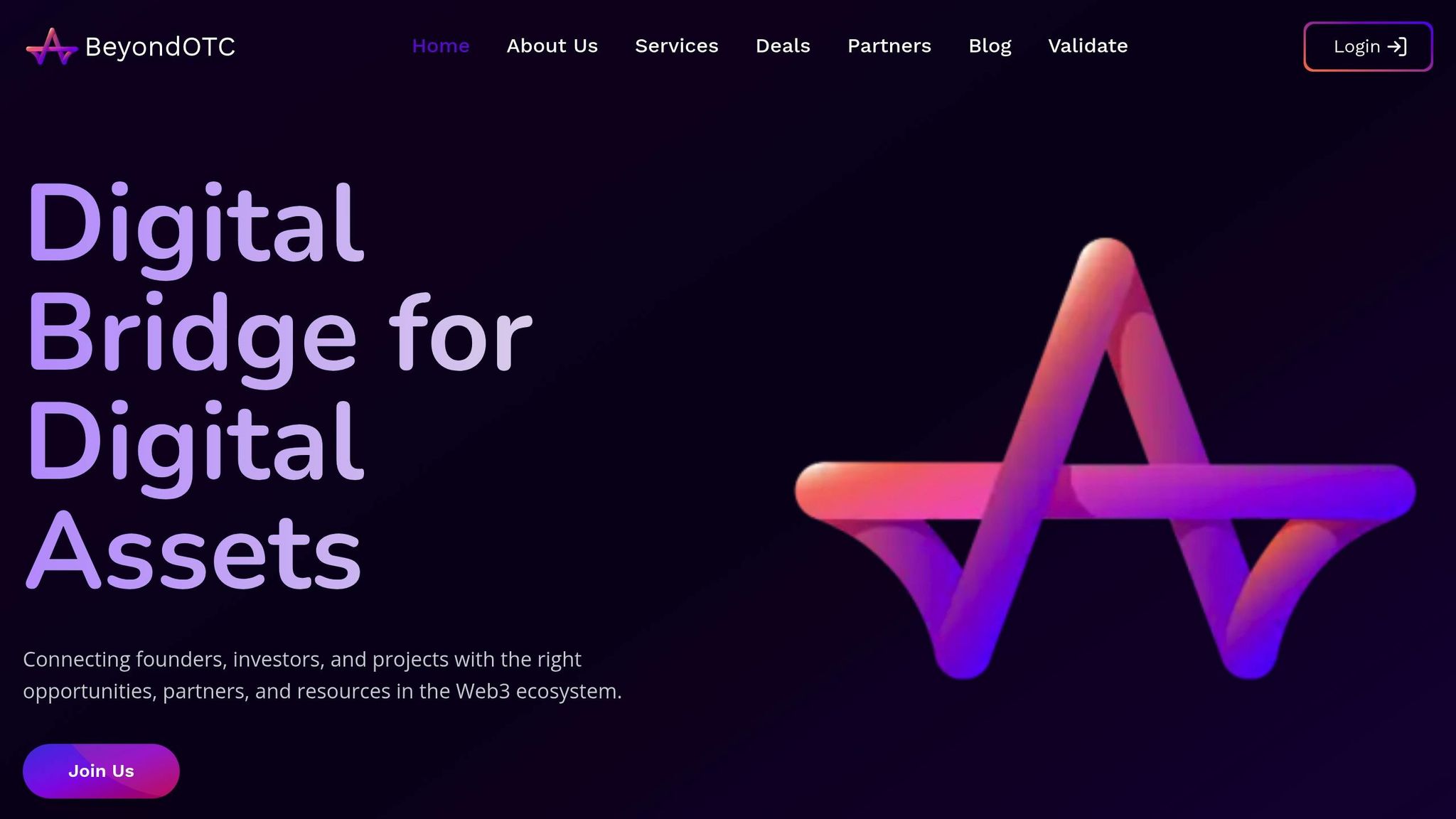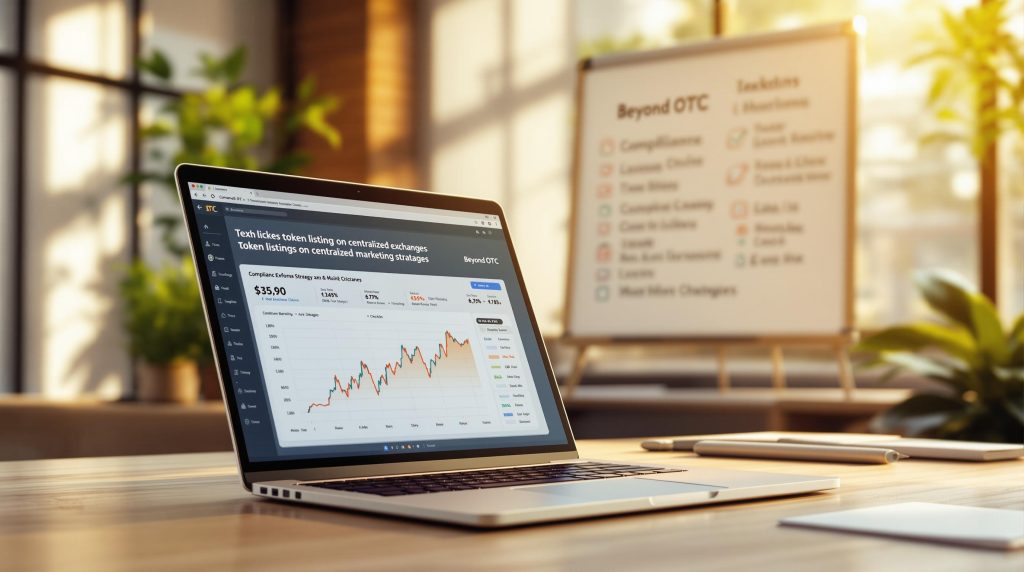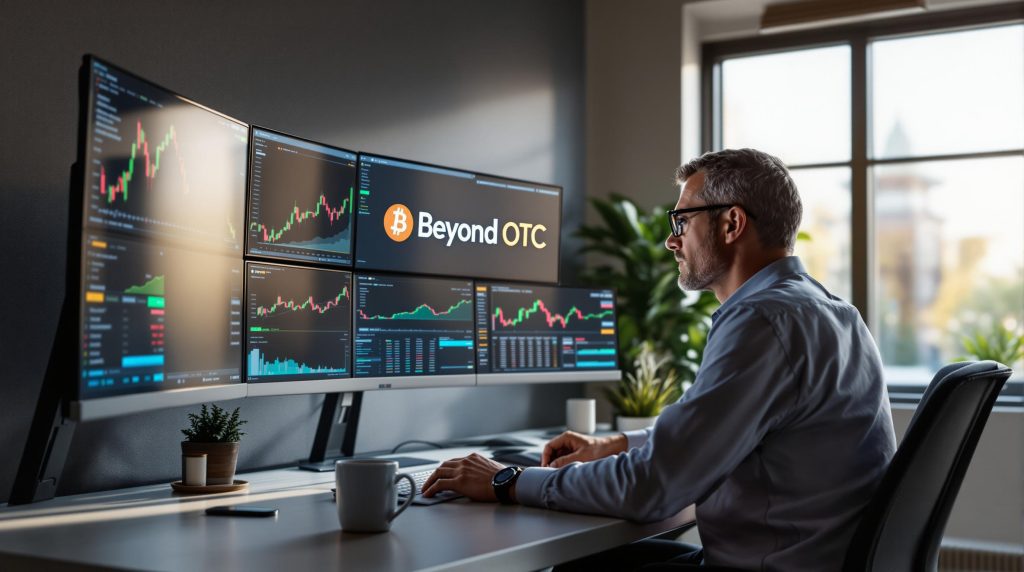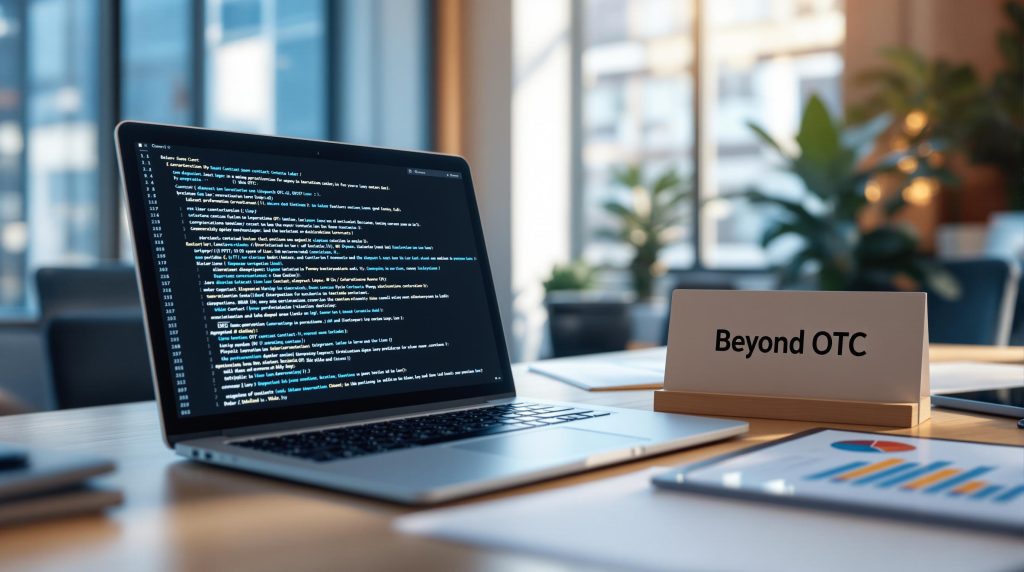- Prepare Legal and Compliance Documents: Ensure KYC/AML compliance, legal opinions, and tokenomics documentation are in order.
- Choose the Right Exchange: Evaluate trading volume, security, technical infrastructure, and fees. Decide between Tier-1 (high standards, high fees), Tier-2 (moderate), or Tier-3 (low fees, niche markets).
- Submit Your Application: Provide technical documents (audit reports, API guides), business documents (white paper, roadmap), and financial proof (listing fees).
- Complete Technical Integration: Test APIs, set up trading pairs, and establish liquidity with market makers.
- Follow Up and Prepare for Launch: Track the application, finalize security checks, and plan marketing.
Quick Tip: Use services like BeyondOTC for expert help with compliance, market-making, and exchange connections.
Key Comparison of Exchange Tiers
| Feature | Tier-1 | Tier-2 | Tier-3 |
|---|---|---|---|
| Listing Fees | High | Moderate | Low |
| Liquidity | Global | Regional | Niche |
| Security Standards | Advanced | Moderate | Basic |
| Onboarding Speed | Slow | Moderate | Fast |
Timeline: Most applications take 4–8 weeks from submission to approval.
Ready to list your token? Follow these steps to increase your chances of success.
Before You Apply
Legal Requirements
To meet U.S. KYC/AML regulations, you’ll need to gather essential legal documents like compliance reports, corporate charters, and legal opinions. These should align with both exchange and regulator expectations. Don’t forget to include your tokenomics documentation, as it’s crucial for submitting a complete application package.
For easier preparation, consider using compliance templates and resources available through BeyondOTC.
Working with BeyondOTC

- Get direct access to decision-makers at centralized exchanges (CEX) and market makers
- Benefit from in-house legal compliance support and filing templates
- Receive personalized go-to-market strategies and liquidity introductions
Ultimate Guide to Crypto Token ListingCentralized vs …
Choosing an Exchange
Picking the right centralized exchange for your token requires a detailed look at several key factors. Here’s what you need to know:
Key Factors to Evaluate
When assessing exchanges, keep these points in mind:
Trading Volume and Liquidity
- Look at daily trading volume and the depth of the order book.
- Check the number of trading pairs available.
- Review the exchange’s connections with liquidity providers.
Security and Compliance
- Ensure the exchange complies with regulations in your target regions.
- Verify the presence of insurance and custody protections.
- Research audit policies and any history of security incidents.
Technical Infrastructure
- Confirm API support and integration options.
- Evaluate the speed of order matching.
- Check for consistent uptime and scalability.
Listing Requirements to Consider
Exchanges typically have specific requirements for listing tokens. These often include:
Technical Requirements
- Submission of audit reports.
- Access to a GitHub repository or similar platform.
- Detailed API and integration documentation.
Business Requirements
- Evidence of an established market cap or trading history.
- Clear documentation of your token’s utility.
- Proof of a viable business model and roadmap.
Financial Requirements
- Payment of listing fees.
- Commitments to market-making activities.
Comparing Exchange Tiers
Exchanges can generally be grouped into three tiers based on their listing standards and capabilities:
Tier-1 Exchanges
- Offer the most rigorous due diligence processes and charge the highest listing fees.
- Provide extensive global liquidity and access to large markets.
- Feature dedicated support teams and advanced security measures.
Tier-2 Exchanges
- Have moderate listing fees and a more streamlined vetting process.
- Focus on solid regional liquidity and mid-level support services.
- Offer balanced security protocols.
Tier-3 Exchanges
- Charge lower fees and provide quicker onboarding.
- Cater to emerging or niche markets.
- Offer basic support and simpler security features.
Other Important Factors
Before making a decision, also consider:
- The exchange’s reputation and history with security incidents.
- Regulatory coverage and geographic reach.
- Diversity of trading pairs and market options.
- The full fee structure, including any hidden or variable costs.
Once you’ve evaluated these factors, you’re ready to move on to preparing and submitting your application.
sbb-itb-7e716c2
Application Process
Once you’ve identified your target exchanges, gather the necessary documents and follow this step-by-step application process.
Required Documents
To ensure a smooth application, prepare the following:
- Technical Documents
- Smart contract audit reports
- Token contract source code
- API documentation and integration guides
- Security assessment results
- Business Documents
- White paper with tokenomics details
- Business plan and roadmap
- Team background and KYC information
- Legal opinions and compliance reports
- Corporate registration documents
Submission Steps
-
Pre-Application Review
- Complete the exchange’s initial questionnaire.
- Submit the required preliminary documents.
- Pay any application review fees, if applicable.
-
Primary Application
- Fill out the formal listing application.
- Upload all required documents.
- Provide technical integration details.
- Submit proof of funds for listing fees.
-
Technical Integration
- Set up test environment connections.
- Conduct API integration testing.
- Establish relationships with market makers.
- Configure trading pairs.
Follow-Up Management
-
Tracking Your Application
- Use the exchange portal to monitor the status.
- Respond to any requests for additional information within 48 hours.
- Keep track of technical integration milestones.
- Document all communication with the exchange.
-
Pre-Launch Preparations
- Finalize security checks.
- Arrange for market making.
- Set up monitoring systems.
- Plan marketing activities for the launch.
-
Ongoing Compliance
- Keep documents up to date.
- Renew legal certifications as needed.
- Address any regulatory updates.
- Ensure team KYC information remains current.
Review and Approval
Assessment Criteria
When reviewing your application, exchanges focus on several key areas:
- Token utility: How your token functions and its practical uses.
- Smart contract security: Results from audits and testing.
- Regulatory compliance: Documentation to confirm adherence to laws.
- Market maker agreements: Arrangements to ensure liquidity.
- Community engagement: Metrics showing user involvement and interest.
- Team background: Verification of team members’ credentials.
- Technical integration: Readiness for seamless exchange integration.
- Financial stability: Indicators of your project’s financial health.
Exchange teams will carefully review the audit reports and tokenomics documentation you submitted during the application to confirm all requirements are met.
Security Verification
A thorough security check ensures your project meets the exchange’s standards. This includes:
- Auditing and verifying smart contracts on-chain.
- Reviewing code repositories and identifying vulnerabilities.
- Performing penetration tests on integration endpoints.
- Verifying compliance with KYC (Know Your Customer) and AML (Anti-Money Laundering) regulations.
- Validating wallet security protocols.
- Confirming third-party security audits.
- Checking for compliance with any exchange-specific security requirements.
Timeline and Results
Stages and Estimated Durations:
- Initial security review: 1–2 weeks
- Technical assessment: 2–3 weeks
- Compliance verification: 1–2 weeks
- Final approval process: 1 week
How You’ll Be Notified:
- Status updates through the exchange portal.
- Written feedback highlighting any issues.
- A final decision letter.
- An integration timeline if approved.
- Details on the appeal process if your application is rejected.
Most projects receive a final decision within 4–8 weeks after completing their application and technical integration. If you’re looking to speed things up, BeyondOTC can assist by leveraging their connections with exchange review teams.
Next Steps
After receiving final approval, focus on these key actions to move forward:
Summary
With exchange approval in hand, it’s time to finalize the following:
- Ensure smart contracts are audited
- Prepare clear and thorough documentation
- Complete all required regulatory filings
- Plan for liquidity needs after listing
To streamline this process, consider leveraging the expertise of BeyondOTC.
BeyondOTC Services
BeyondOTC provides support at every stage, from preparation to post-listing:
- Go-to-Market & Networking (Pre-Application): Assistance with listing strategies, choosing the right exchange, and introductions to centralized exchanges (CEX) and market makers.
- Legal & Compliance (Application): Help with regulatory filings and oversight for KYC/AML requirements.
- Fundraising & Trading (Post-Listing): Support for fundraising efforts, investor outreach, and solutions for managing large-volume OTC liquidity.




